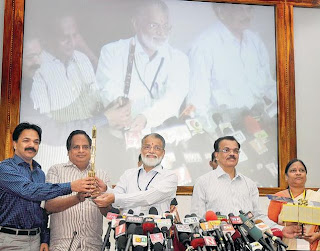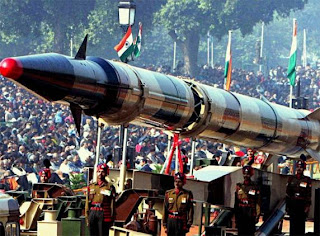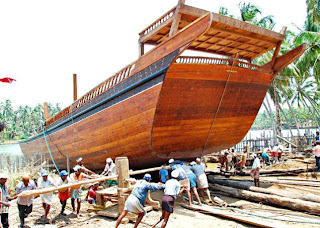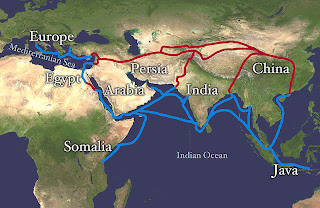 It took them 190 km and 14 years to muster the courage to let him go. And yet, two weeks before E Sreedharan quits as managing director, Delhi Metro Rail Corporation (DMRC), their trepidation is palpable. The question is not whether Phase III of the Delhi Metro will be completed by its deadline - 2016. The question is whether it will be done the Sreedharan way. Will his legacy continue after he is no longer at the steering wheel?
It took them 190 km and 14 years to muster the courage to let him go. And yet, two weeks before E Sreedharan quits as managing director, Delhi Metro Rail Corporation (DMRC), their trepidation is palpable. The question is not whether Phase III of the Delhi Metro will be completed by its deadline - 2016. The question is whether it will be done the Sreedharan way. Will his legacy continue after he is no longer at the steering wheel?The man himself is unruffled. Sreedharan has full faith in his team to carry forward Delhi Metro's sterling tradition. After all, the credit for the project's success must go to the 7,000 employees who work hard everyday, he says.
This is Sreedharan the leader, who has evolved a system that he believes, can do without him. This is Sreedharan the man, who is self-effacing in his humility and can't be bothered with glory.
Yet, in the past decade fame chased him. As the Delhi Metro rolled out track after track with speed, precision and transparency, the 'Metroman' became the icon for many Indians.
Along the way, there were several attempts to deconstruct his success. Every little idiosyncrasy was analysed, each quote repeated several times over. Fans tried to build his work philosophy with scraps of information about how he ran the Delhi Metro. But very few succeeded in inculcating a bit of the Sreedharan style in their lives.
So as Sreedharan prepares for his time off, ET on Sunday decided to revisit the decade and a half that made him an icon. Only this time, we have culled the learnings and formatted them to fit into your role in life. This is the list of lessons with tips from the legend, customised for YOU.
IF YOU ARE A POLICY MAKER
Redefine the Context
Benchmark yourself against the prevalent system and you'll land with moderate success. It will not measure up to the grandeur of a Delhi Metro. Such things demand a vision not limited by convention or expectations. People would have been happy if the first phase of the metro was completed by the deadline - 2005. But Sreedharan raised the bar. He told his team, Delhites couldn't wait for 10 years for a Metro. The deadline was shortened by three years and met.
Focus on Goals Not Politics
Shore up your perseverance and prepare for maximum resistance, especially by political expediencies. "I don't know why some bureaucrats are not able to function. They should have the courage to stand up to their convictions and take decisions and not leave everything to the politicians," says Sreedharan. He followed this principle throughout his career.
One such occasion was as the head of the Konkan Railway project in the 1990s. They were years of flux as Goa saw chief ministers change four times between 1993 and 1994. Every change brought a fresh group of lobbyists into the spotlight. "Sreedharan was a rock who was determined to get the project completed," recalls PV Jayakrishnan who at the time worked as the chief secretary, Goa.
Sreedharan shares another anecdote. In the early years of his DMRC stint, he was to appoint international consultant for the project. His team chose the Japanese on the basis of their bids. But the then railway minister insisted on the Germans as they had lobbied hard for the position.
"I refused to give in. And refused to even give him any explanation," says the Metroman. He was confident he had chosen the best and followed all the required procedures. Finally, Sreedharan's choice was accepted. "That one incident [withstanding political pressures] increased the confidence of my team enormously," he explains.
IF YOU RUN A COMPANY
Pick a Few Good Men
This one is a lesson by Sreedharan and about him. Despite being older than the rulebook allowed for (he was 65 years old), the government handpicked him for the job of heading the Delhi Metro project. The then Delhi chief minister, Sahib Singh Verma, the then Delhi lieutenant governor, Tejendra Khanna, the then Delhi chief secretary, Jayakrishnan, pushed for his candidature around 1996.
"We were convinced Sreedharan was the one who could make it possible," recalls Jayakrishnan, who is now the chairman of the central empowered committee on environment. So the then prime minister HD Deve Gowda granted special permission to let Sreedharan take charge as the DMRC head. The choice of the correct leader laid the foundation of DMRC's dream run.
Sreedharan also relied on a good team to translate his vision into reality: "I asked the government for two things - the independence to operate with no interference from politicians and bureaucrats. And the freedom to pick my own team."
Practice What You Preach
As the top boss, religiously follow the rules critical to establishing the company's values. Punctuality is DMRC's hallmark - trains roll into stations precisely by the minute, meetings start on schedule and employees must walk into the office before 9 am. "Our business is about being punctual. We cannot compromise on it," says Anuj Dayal, chief public relations officer, Delhi Metro. This is why, if an employee is five minutes late to work, it is clocked in as a half-day. The philosophy is: if you are late for office, you could be late for the project. Says Dayal: "Our trains are 99% punctual."
Sreedharan leads by example: he is never late for any commitment, at the work sites or at meetings. Speed is the buzzword. Decisions at DMRC are quick, with tenders as big as Rs 2,000 crore are cleared in 15-20 days without missing out on any government procedure or audit guidelines.
Seek Different Narratives
You can never pre-empt the company's problems by staying closeted in the corner office. Sreedharan ensures he is always in the loop of the goings on of the company. Every Monday, at 9.30 am, he holds weekly meetings attended by the four directors and 40-odd department heads. This is a freewheeling chat and the minutes of the meeting are not recorded. Sreedharan takes stock of the previous week's performance and sorts out glitches for the future. "We discuss everything here. That is one place I send my message to my people," he says. For ready reference, he always carries a small diary to take notes.
On the first Monday of every month, Sreedharan also holds a meeting with mid-level managers to get a broader sense of the issues and his employees. He is approachable for all and does not limit his interactions by hierarchy.
Challenge Yourself and the TeamStagnation sets in after efficiency so pull up goal posts and demand higher quality standards to force constant improvements. DMRC executives say every time their goal seems achievable and easy, Sreedharan throws up a surprise by setting a tighter deadline. He then works with his team to make it possible.
Sreedharan is humble, thrives on challenges and faces them head on. Recalls Rakesh Mehta, ex-chief secretary, Delhi government: "There was a Calcutta Bridge near ring road in Delhi that we wanted to widen. The project was awarded to a contractor. After spending Rs 10 crore over four years, he gave up in 2004 claiming it was logistically impossible. There was a drain pipe under the bridge and the contractor claimed the road couldn't be broadened without damaging the pipe."
Desperate, Mehta called Sreedharan for help. Within 24 hours, he visited the site with his engineers, redesigned the process, suggested minor modifications and the bridge was later completed within a year.
Keep the System Squeaky Clean
The message must go out loud and clear: integrity is priority and non-negotiable for the company. DMRC is perhaps the only mega infrastructure project of the country considered free from corruption taints. To achieve this, Sreedharan puts ethics high up on his goals list. He personally handpicked his team members in the initial years after lot of due diligence. Once on board, strong structures and procedures are in place for every activity - from tendering of contracts to recruitments - to keep employees on the ethical path.
To foster values, a copy of Makaranda Bhagwadgita is given to all employees when they join. "I do not consider it a religious text. It is an administrative gospel that teaches you how to face challenges and overcome them," says Sreedharan. All new DMRC staff also take an oath of integrity when they come on board.
IF YOU HEAD A PROJECT
Keep the To-do List Small
When the time period is short, prioritise to keep confusion out of execution. And don't pile your plate too high. In 1989, Sreedharan was appointed member, engineering, Railway Board for only 11 months. His ex-colleague, CBK Rao, now a senior adviser, ITNL Enso Rail Systems which is developing rapid metro rail in Gurgaon, recalls how Sreedharan picked only three goals for the stint: to reduce track fracture, improve quality of rails and their welding. As a result of his focus, in 11 months, there was spectacular progress on all three fronts, Rao recalls.
Think Bigger Than the Brief...
A bridge is just a bridge till you envision it as a state-of-the-art engineering wonder. Sreedharan always dreams big. "I have always aspired to get the best technology available in the world," he says as an example. This has translated into many technological firsts for Delhi Metro. For instance, it was the first in the world to use contactless smart card technology - where the machine could deduct fares from the smart card from a short distance.
To sustain this edge, employees at DMRC are encouraged to go abroad and understand new technologies. These tours are no holidays, says an official with the company. The trips are packed with meetings and appointments. As a result Delhi Metro keeps up with the latest trends in engineering.
"I can say we have got some of the best experts of the world in each category - from signalling to engineering - in my office today," says Sreedharan.
...And Beyond It
Be proactive and don't shy away from unconventional solutions as long as the problem is resolved. The focus must be getting past an obstacle. Here's how Sreedharan does it. In 2009, DMRC was building the Delhi-Gurgaon line which was to pass through some Chhatarpur farm houses. The owners took the matter to court and work was stopped. Realising that the legal wrangle will delay the project, Sreedharan got his engineers to build an entire station of pre-fabricated steel. Six months before the metro line was to be commissioned, DMRC won the case. Then the employees simply moved the steel box and erected the station - and met the deadline.
THE SREE WAY OF LIFE
Gets up early at 4:30 am, completes morning chores and does yoga and meditation Office begins at 9 am. He is in by 8.30 am Leaves office early by 5.30 pm
Has tea with family and goes out for an hour of evening walk Retires by 10 pm.
Uses cellphone and computer sparingly
Doesn't carry work home.
And doesn't bother colleagues when they are home unless there is an emergency
Avoids socialising and late-night parties
Leisure? Attends, when time permits, classical music & dance recitals.














